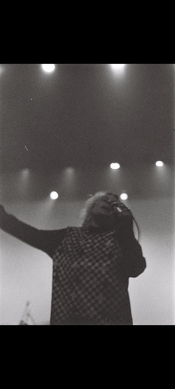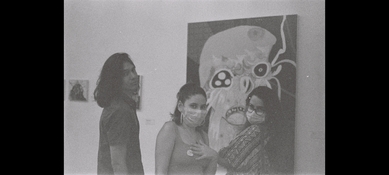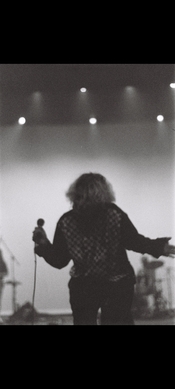allohse
Member
Hello. It's been some time. Finally processed my first roll of film. As I said on a previous post, I tried pushing one stop, since I was afraid I had underexposed some (it was 250 ISO, so, having decided to push one stop, I shot the rest of the roll as 400). It was a show and I couldn't meter very correctly, so at the time I just tried to make it as bright as I could. I'll attach some of the pictures!
I have only one question though. Is the low contrast (kind of a washed up feel) on some of the pictures an effect of having pushed the film? Or is it maybe just the film I used? What are the other effects? More grain?
Also (like a stupid FOOL) I mistakenly opened the back of the camera with the film still inside and lost half of the roll. Just thought it would be fun to mention.
Anyway, I kinda liked the result. No point in shooting film for it to end up looking just like digital, right? Already shot another roll and I'm sure it will end up way better than this one.
* black and white cinema film, 250 ISO (shot as 400) - Nikon Fe - Nikkor 50mm f/1.8 *
I have only one question though. Is the low contrast (kind of a washed up feel) on some of the pictures an effect of having pushed the film? Or is it maybe just the film I used? What are the other effects? More grain?
Also (like a stupid FOOL) I mistakenly opened the back of the camera with the film still inside and lost half of the roll. Just thought it would be fun to mention.
Anyway, I kinda liked the result. No point in shooting film for it to end up looking just like digital, right? Already shot another roll and I'm sure it will end up way better than this one.
* black and white cinema film, 250 ISO (shot as 400) - Nikon Fe - Nikkor 50mm f/1.8 *
Attachments
-
 Screenshot_20220724-015724_Gallery.jpg1.2 MB · Views: 93
Screenshot_20220724-015724_Gallery.jpg1.2 MB · Views: 93 -
 Screenshot_20220724-015642_Gallery.jpg1.2 MB · Views: 101
Screenshot_20220724-015642_Gallery.jpg1.2 MB · Views: 101 -
 Screenshot_20220724-015647_Gallery.jpg1.2 MB · Views: 95
Screenshot_20220724-015647_Gallery.jpg1.2 MB · Views: 95 -
 Screenshot_20220724-015654_Gallery.jpg1.2 MB · Views: 93
Screenshot_20220724-015654_Gallery.jpg1.2 MB · Views: 93 -
 Screenshot_20220724-015759_Gallery.jpg1.2 MB · Views: 92
Screenshot_20220724-015759_Gallery.jpg1.2 MB · Views: 92 -
 Screenshot_20220724-015730_Gallery.jpg1.2 MB · Views: 88
Screenshot_20220724-015730_Gallery.jpg1.2 MB · Views: 88 -
 Screenshot_20220724-015737_Gallery.jpg1.2 MB · Views: 95
Screenshot_20220724-015737_Gallery.jpg1.2 MB · Views: 95






